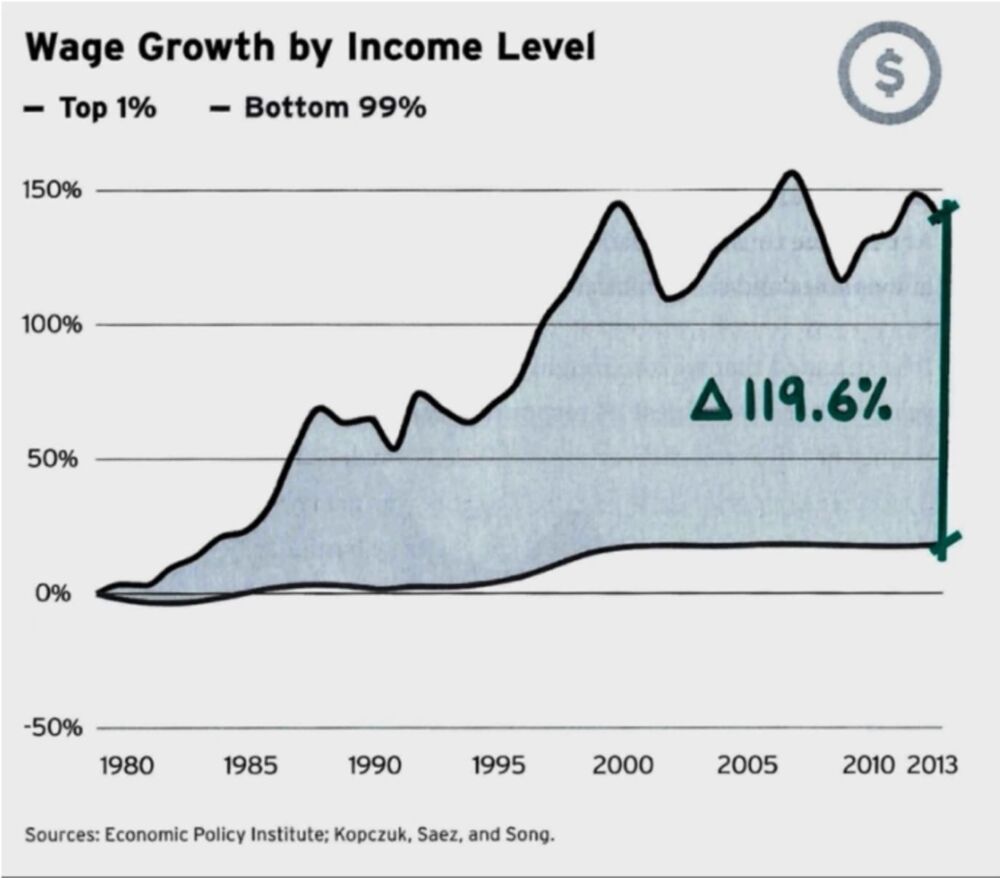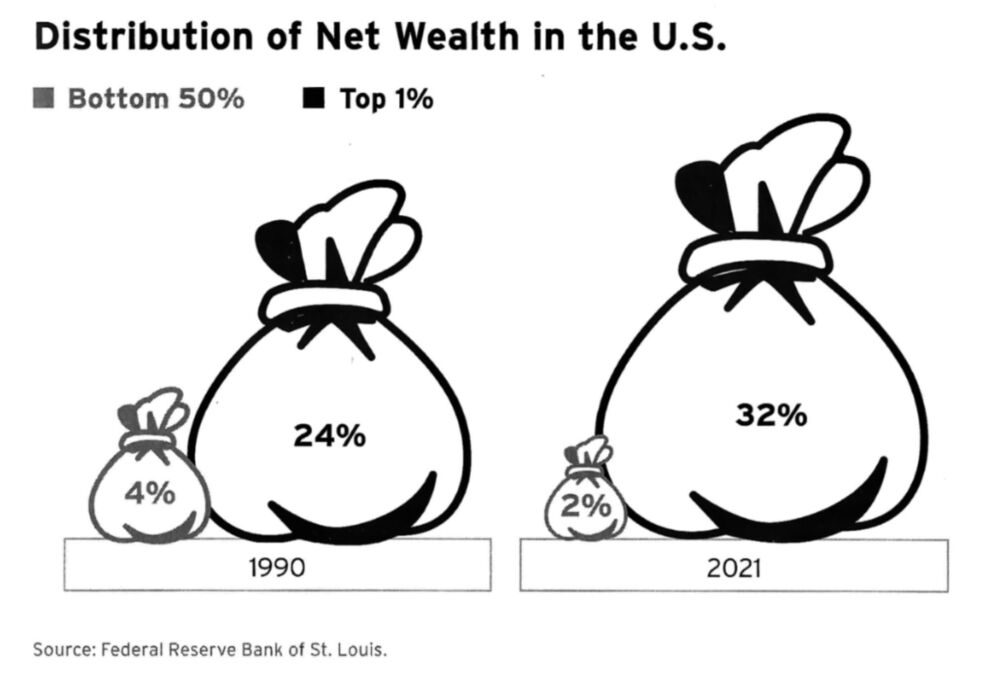With Republicans slated to take over the House of Representatives in January and their promise to hold multiple investigations, I wonder if they are going to truly investigate the things that are important to all Americans.
Such as, did Rudolph have a red nose, or did he just have a cold? Will Trump ever tell the truth in God’s lifetime? Does losing $900 million in two years make Trump smart? Are Rep. Taylor Greene and Lauren Boebet related to Annie Oakley? And, was Dick Cheney right when he said deficits don’t matter?
As to Cheney’s remark, it needs to be contextualized considerably. Only a book-length exploration of our fiscal position like “Adrift: America in 100 Charts” (free EPUB download) allows us to fully understand how our tax policies really impact our nation, especially rates for corporations. To understand how we got here, we have to ask how it started, and who started it. One of the most insightful brief looks into tax policy (especially tax cuts) can be found in “The Education of David Stockman” (President Ronald Reagan’s Budget Director) in the Atlantic Magazine from Dec. 1981 by the late, great William Greider.
When President Carter left office in 1980 the deficit was $299 Billion, a rise during his term of 42.79%. When Reagan left office, the deficit was $1.86 Trillion, a rise of 186.36%. Unfortunately for America, Reagan’s budget was first drawn on a cocktail napkin by so-called economist Arthur Laffer of the famous curve, a member of Reagan’s Economic Policy Advisory Board. The ‘Laffer Curve’ suggested that lowering tax rates might actually increase tax revenue, and shows that ideas can have real-world consequences, such as an increase in national debt and higher inflation.
As projected by most competent and serious economists, the deficit worsened and it became clear that the 1981 tax cut was too big. So, with Reagan’s signature, Congress undid a good chunk of the 1981 tax cut by raising taxes a lot in 1982, 1983, 1984, and 1987. George H.W. Bush signed yet another tax increase, which lost him his base and possibly a second term as President.
One lesson from that history: When tax cuts are too big to be sustainable, they’re often followed by tax increases. Reagan’s tax cuts not only raised the deficit but forced him to raise taxes elsewhere, especially on individuals. His most famous ‘revenue enhancement’ was taxing the part of employers pay into Social Security for their employees, causing employees to pay additional taxes.
Figures from The Tax Policy Center show the Top Corporate Tax Rate of 21% for 2021, and the Highest Marginal Income Tax Rate of 37%. In 2021, the U.S. collected $372 billion in corporate taxes, and for individual income taxes, it amounted to $2.04 trillion. The total revenues of the U.S. government totaled around $4.03 trillion U.S. dollars. One would think that with a little of 2 trillion paid by individuals in taxes they must be doing fine. But a chart from Adrift titled Wage Growth by Income Level tells a different story.

Stockman, in the article from the Atlantic, famously said he didn’t entirely buy the supply-side notion he thought of it as wishful thinking. But admitted in the article that supply-side was a “Trojan horse to bring down the top rates.” Stockman claimed Arthur Laffer sold Reagan a bill of goods. “The hard part of the supply-side tax cut is dropping the top rate from 70 to 50 percent, the rest of it is a secondary matter, Stockman explained.” The original argument was that the top bracket was too high, and that’s having the most devastating effect on the economy. Then, the general argument was that to make this palatable as a political matter, you had to bring down all the brackets. His failed expectations were derived from many events. In August, when the enactment of the Reagan program was supposed to create a boom, instead, the financial markets sagged. Interest rates went still higher, squeezing the various sectors of the American economy. Real-estate sales were dead, and the housing industry was at a historic low point. Hundreds of savings-and-loan associations were at the edge of insolvency. The Treasury Secretary, perhaps also losing his original faith in the supply-side formulation, suggested that it was time for the Federal Reserve Board to loosen up on its tight monetary policy.
 As Americans, we understand perfectly all about Republican tax cuts and especially about Trickle Down Economics. It’s all about the middle class renting the basement apartment of an OUT HOUSE. And we all know nothing good can come of that.
As Americans, we understand perfectly all about Republican tax cuts and especially about Trickle Down Economics. It’s all about the middle class renting the basement apartment of an OUT HOUSE. And we all know nothing good can come of that.
According to the New York Society of Public Accounts, 19 Fortune 100 Companies paid next to Nothing in Taxes in 2021. Below are just a few of the most well-known travesties of corporate taxation.
- Amazon’s effective federal income tax rate was 6.1 percent in 2021, with $35.1 billion in U.S. earnings and $2.1 billion in federal income taxes.
- Exxon Mobil’s effective federal income tax rate was 2.8 percent in 2021, with $9.3 billion in U.S. earnings and $236 million in federal income taxes.
- Microsoft’s effective federal income tax rate was 9.7 percent in 2021, with $33.7 billion in U.S. earnings and $3.3 billion in federal income taxes.
- JP Morgan Chase’s effective federal income tax rate was 5.9 percent in 2021, with $48.2 billion in U.S. earnings and $2.9 billion in federal income taxes.
- Verizon’s effective federal income tax rate was 6.9 percent in 2021, with $27.2 billion in U.S. earnings and $1.9 billion in federal income taxes.
- Bank of America’s effective federal income tax rate was 3.5 percent in 2021, with $31 billion in U.S. earnings and only $1.1 billion in federal income taxes.
This final chart of the Distribution of Net Wealth from “Adrift: America in 100 Charts” (see link above for a copy of the book), I think tells the tale of Trickle-Down Economics on our middle class and working poor:

Part of President Biden’s Inflation Reduction Act allocates $79.6 billion to the IRS over the next 10 years. More than half of the money is meant for enforcement, with the IRS aiming to collect more from corporate and high-net-worth tax dodgers. The $80 billion is intended to shore up the IRS after years of tight budgets; to hire new agents after decades of workforce development neglect and a flood of retirements on the near horizon, and to remove some of the uncertainty over the agency’s funding. But if anything, it will likely up the stakes over the agency’s budget, particularly that portion that still must be approved each year by Congress. Leave it to the Republicans to try and claim this will only result in more middle-class tax audits instead of ensuring that large corporations and the wealthiest 0.1% finally start paying their fair share to support America.
Discover more from Blog for Arizona
Subscribe to get the latest posts sent to your email.

The Rudolph part was satire, tax policy was the story. The Atlantic story, “The Education of David Stockman” Dec. 1981 (all 40 pages of it) will explain in plain English everything a person will ever have to know about Republicans real agenda on tax cuts.
Hope this will give some real directions on tax cuts. Pardon the pun.
Rudolph was a SHE. Males lose their antlers over the winter; females keep their antlers over the winter. So all the reindeer pulling the (imaginary) sleigh are female. Which makes sense. Males could never find their way around the entire globe in one night without asking directions.